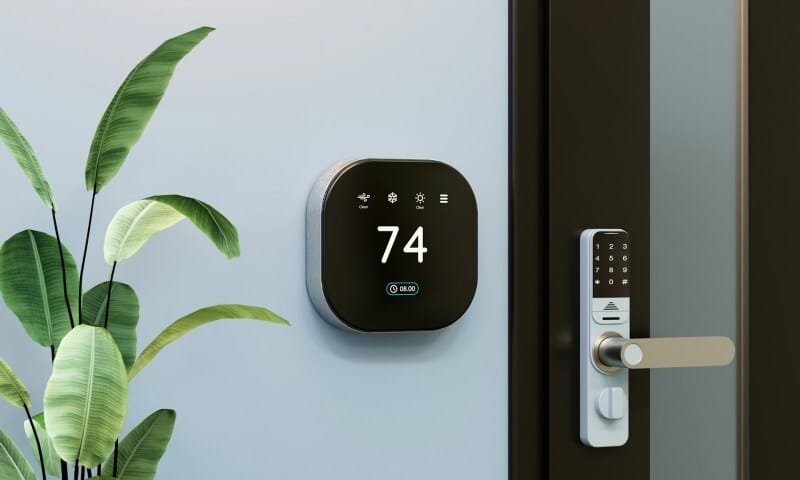Simple eco-friendly upgrades are an excellent way to improve your home’s efficiency and longevity while protecting the environment. Consider a greener alternative and explore five practical tips to make your house more sustainable and energy-efficient.

Photo by vu anh on Unsplash
As awareness of environmental concerns grows, more homeowners are focusing on creating eco-friendly homes that benefit the planet and their well-being. Converting to eco-friendly materials will help reduce your carbon footprint and save you money on energy bills and maintenance costs.
Transforming your house into a more sustainable space starts with simple changes that have lasting impacts. In this article, we’ll explore some tips for making your house more eco-friendly while giving you the peace of mind of knowing your home will last.

Image by Natalia Blauth on Unsplash.
Increase Your Roof’s Durability
Roofs are the first line of defense against the elements. They protect a home and its occupants from weather conditions like rain, wind, and extreme temperatures. With proper materials and maintenance, you will never have to worry about how many years your roof should last.
Incorporating more durable and sustainable materials into your roofing will help your home withstand harsh weather conditions and save you money on maintenance costs. Eco-friendly materials such as metal, clay, recycled rubber, and vegetation are often made from natural resources to help minimize environmental impact. For example, Clay tiles are long-lasting and enhance energy efficiency with their natural insulation.

Photo by Mohamed Nohassi.
Utilize Solar Panels
Solar panels significantly enhance a home’s eco-friendliness by generating clean, renewable energy to reduce the reliance on fossil fuels and decrease greenhouse gas emissions. They increase a home’s energy efficiency, which results in lower utility bills and sustainable living.
Properly installed solar systems can extend the roof’s lifespan by acting as a protective layer against rain and hail. They are made from robust materials that can withstand harsh weather conditions, protecting the roof from impacts and reducing the risk of damage over time.

Photo by Gabrielle Maurer on Unsplash.
Consider Energy Efficient Windows
Energy-efficient windows help reduce a home’s energy consumption by providing better insulation to maintain consistent indoor temperatures year-round. These windows often feature double or triple glazing, low-emissivity coatings, and special seals that prevent heat transfer and air leaks.
Energy-efficient windows extend the lifespan of your heating and cooling systems by reducing the strain of maintaining a stable temperature. It also improves durability by preventing moisture accumulation and protecting your home from structural damage caused by mold and deterioration.

Photo by Getty Images on Unsplash.
Drywall Insulation Improvements
The insulation in your home minimizes heat transfer through walls, floors, and ceilings to enhance the comfort of your living space. Using high-quality, environmentally friendly materials like spray foam or cellulose improves fire resistance, reduces mold growth, and allows you to create a safer and healthier living space for you and your family.
Improved insulation in your home helps furnace and air conditioning units maintain consistent indoor temperatures. This leads to your home leaving a smaller carbon footprint due to lower energy consumption. It can also prevent the likelihood of gaps leading to drafts and heat leak issues affecting the comfort of your living space.

Image by Imkara Visual on Unsplash
Smart Thermostats
Smart thermostats allow homeowners to remotely control and automate their home’s heating and cooling systems with smartphone apps or voice commands. They’re considered smart because of their ability to learn your scheduling preferences and adjust temperature settings to improve comfort and energy efficiency.
By monitoring occupancy and real time weather conditions, smart thermostats can save money and reduce energy wastage when a house is empty or during off-peak hours.
These devices also foster eco-friendliness by providing usage insights to help homeowners make informed decisions about their energy habits.
Final Thoughts
Investing in simple upgrades like roofing improvements, solar panels, energy-efficient windows, enhanced insulation, and smart thermostats helps homeowners create a more durable and eco-friendly living environment. These enhancements significantly reduce energy consumption, effectively lowering utility bills, decreasing a home’s carbon footprint, and promoting sustainability.
They also save you money by contributing to the longevity of your home. Proper upgrades minimize the amount of wear and tear on vital housing components, such as structural stability and temperature-regulating systems.
When it comes to living an eco-friendly lifestyle, significant changes must be made to protect the environment. Go big by improving your roof with durable and sustainable materials today.
The post 5 Environmentally Friendly Tips for Upgrading Your Home appeared first on Moss and Fog.
